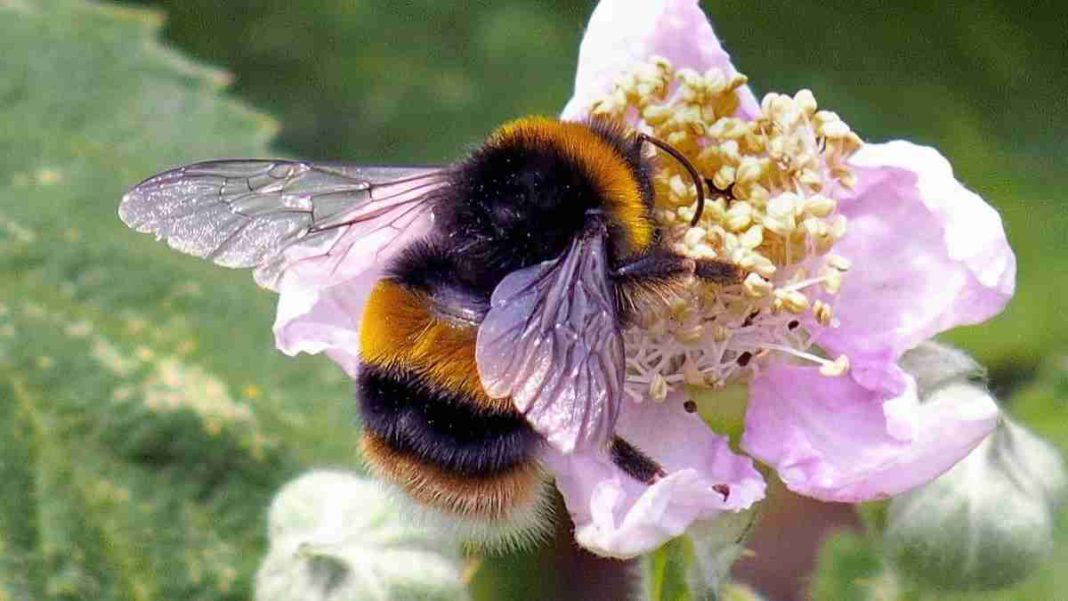UNITED STATES: A new study by North Carolina State University researchers discovered that carrying pollen is challenging for bumble bees. It significantly increases their body temperature.
This newfound understanding of how active bumble bee body temperatures are affected has raised important questions about the potential impact of a warmer world due to climate change on these crucial pollinators.
Observing a nearby flower patch, one can spot bumble bees with distinctive yellow bumps on their back legs. These bumps are solid packets of pollen that the bees meticulously collect during their foraging trips, transporting them back to their nests.
Despite their seemingly effortless movement from flower to flower, these pollen packets can weigh up to a third of the bees’ body weight.
The study revealed that when accounting for environmental temperature and body size, bumble bees carrying pollen had significantly higher body temperatures than their unladen counterparts.
The researchers found that for every milligram of pollen carried, bee body temperatures rose by 0.07°C, resulting in fully laden bees being 2°C warmer than those without pollen.
While the body temperature of bumble bees, like other ectotherms, is primarily influenced by the environment, researchers knew little about their heat tolerance.
The discovery that pollen-laden bumble bees have higher body temperatures suggests that carrying a full load of pollen on a hot day could increase the risk of exceeding their temperature tolerance, potentially reaching critically hot and lethal temperatures.
Malia Naumchik, the study’s lead author, explains that getting warmer from carrying pollen puts bumble bees in the range of stressful, critically hot temperatures. This warmth has essential implications for bumble bees and climate change.
As environmental temperatures increase, the bees’ operational range of temperatures could shrink significantly. Bumble bee populations and species diversity have been declining worldwide, especially in regions experiencing the effects of climate change.
However, the exact mechanisms by which climate change impacts bumble bees still need to be fully understood. This recent finding adds a valuable piece to the puzzle.
Pollen is vital in every stage of a bumble bee’s life cycle. Newly emerged queens in the spring rely on pollen to sustain themselves and nourish their sister workers.
These workers, in turn, take charge of feeding the colony, including the larvae and future queens.
More pollen must be available to prevent colony development, jeopardizing future generations and the species survival. Additionally, this could have far-reaching consequences for pollination, impacting agriculture and ecosystems.
Elsa Youngsteadt, the research supervisor and a professor in applied ecology, emphasizes the need to understand how bumble bees might alter their behaviour in response to increased temperatures.
This knowledge is crucial for assessing the potential impact on pollen collection and pollination activity during hot days. Whether it involves carrying smaller pollen loads or shorter foraging times, any behaviour change could result in reduced pollen supply to colonies and decreased plant pollination.
Pollination is particularly significant because bumble bees are vital ecosystem service providers and critical agricultural pollinators, particularly in the United States and Europe.
Also Read: New Zealand Forbids Export of Live Animals



